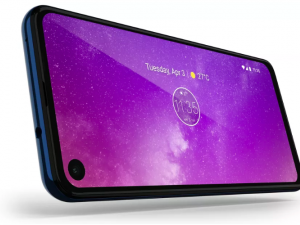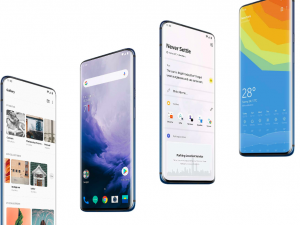Lots Of People Stopped Buying Phones In 2018
Damien McFerran 01/02/2019 – 9:19am
Were you one of them?
If you held off upgrading your phone last year than you contributed to the smartphone industry's first full year of decline.
According to Counterpoint Research, Q4 2018 was the fifth straight quarter of declining smartphone shipments. There was a 7 percent drop in the latest quarter, and the year-long decline was marked at 4 percent. That means that in 2018, the market slumped from 1.56 billion units shipped in 2017 to 1.49 billion. Gulp.
“Consumers held on to their devices longer due to the absence of groundbreaking innovations and higher prices of devices being offered by the OEMs,” said Tarun Pathak, Associate Director at Counterpoint Research.
That's certainly true; 2018 was devoid of really interesting technical improvements, with handset makers instead doubling-down on making bezels smaller and adding more cameras. Consumers voted with their wallets and decided to stick with their current phones, something that was made easier by the fact that companies like Apple have made sure that even some of the oldest iPhones still get the latest software updates. Hanging onto your phone has never been easier.
While the market shrank, each company's share of the smartphone pie shifted slightly. Koren giant Samsung is still top, shipping 19 percent of all the smartphones sold in 2018 – but even then, it only managed 291 million units compared to the 318 million it shipped in 2017.
Apple is still in second place, too, with a 14 percent share based on 206 million units sold worldwide. However, third-place Huawei claimed second place at the end of last year; its market share has risen from 10 percent in 2017 to 14 percent in 2018. It sold 205 million units globally.
Chinese firm Xiaomi is in fourth place with an 8 percent share of the market, and shipped 121 million units in 2018 – up from the 96 million it sold in 2017. Chinese rivals Oppo (120 million) and Vivo (102 million) were next, leaving LG in their wake. LG only managed to ship 41.2 million phones in 2018, compared to 55.9 million in the previous year. Lenovo – the parent company of Motorola – declined from 49.9 million to 38.3 million. Perhaps the biggest shock at the bottom end of the table was that HMD Global's Nokia line of phones sold 15 million units last year, up from just 5 million the year before. While hardly a mobile heavyweight, it's nice to see the Nokia name on the rise.
So, while some firms have benefitted from this year of slowing sales, the message is clear – the smartphone market has reached saturation point and signficant innovations are required to break this downward trend.
Source: Tech Radar




